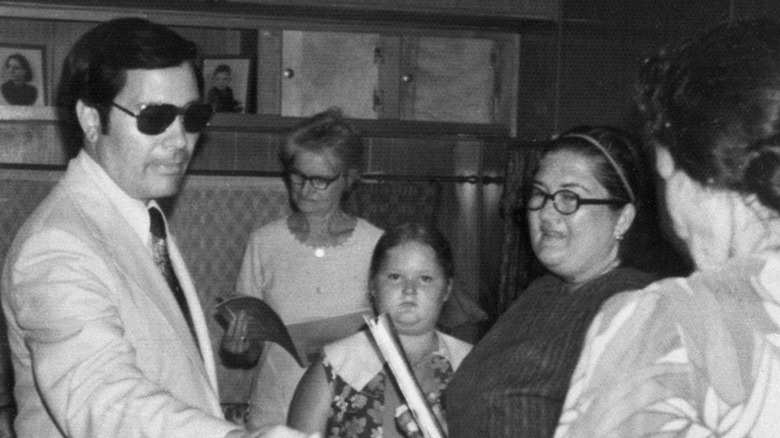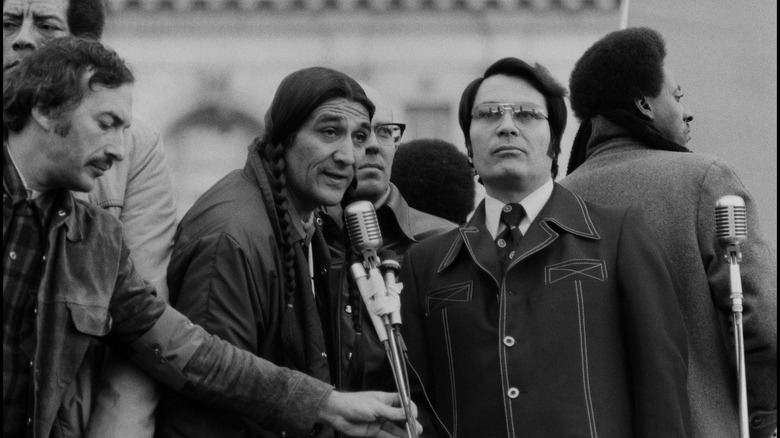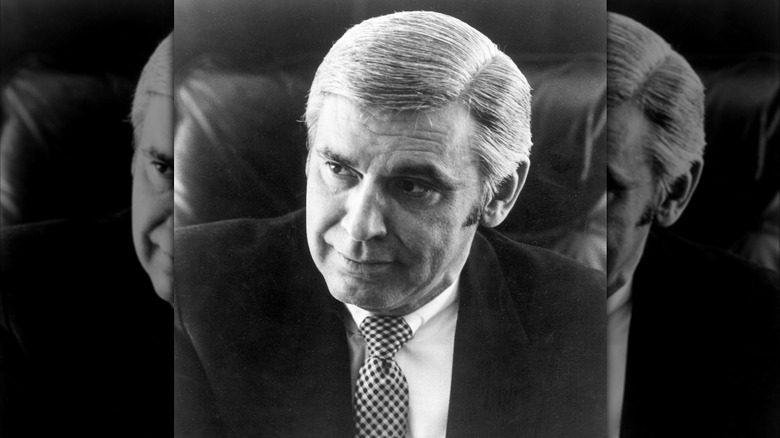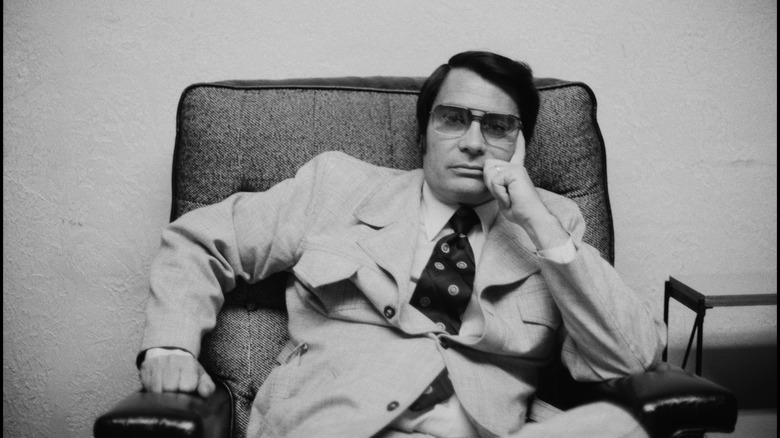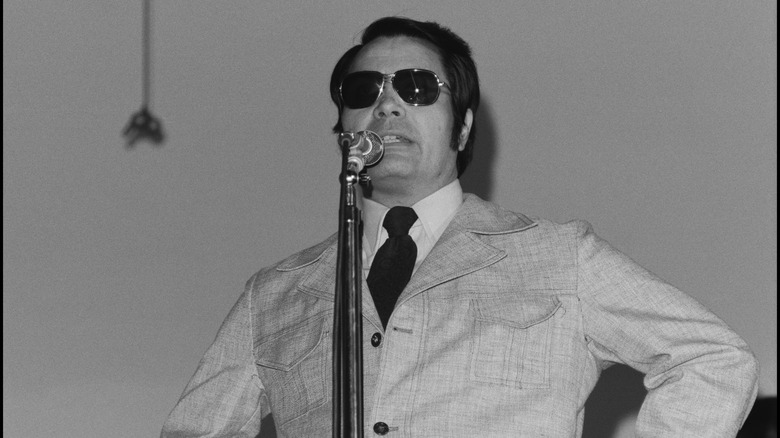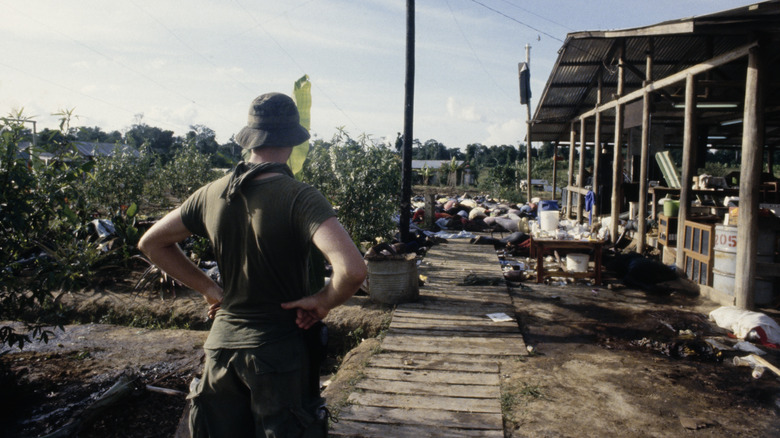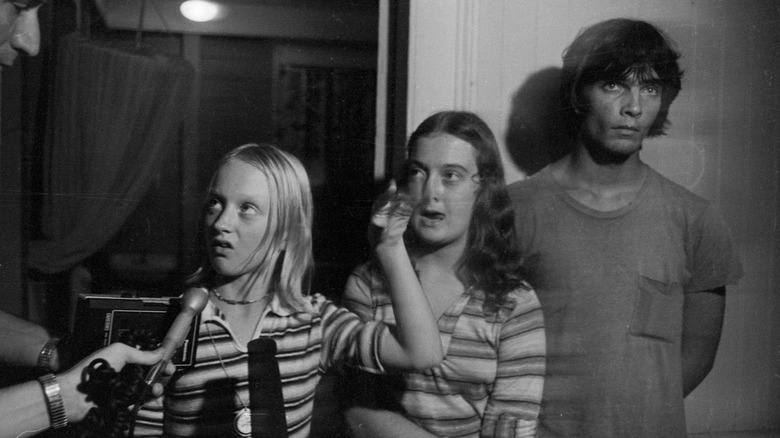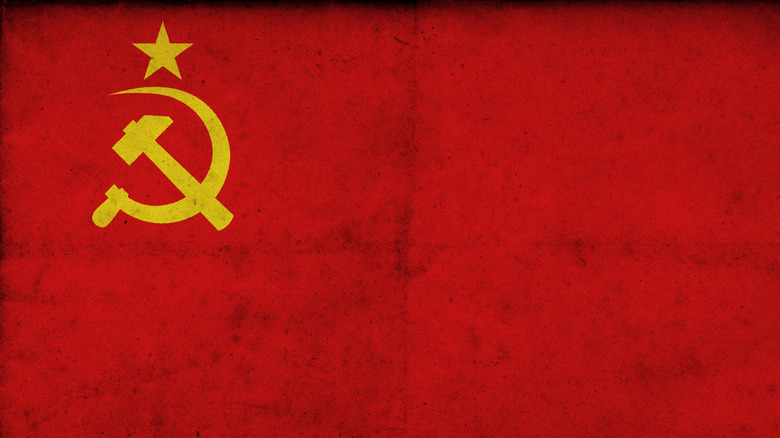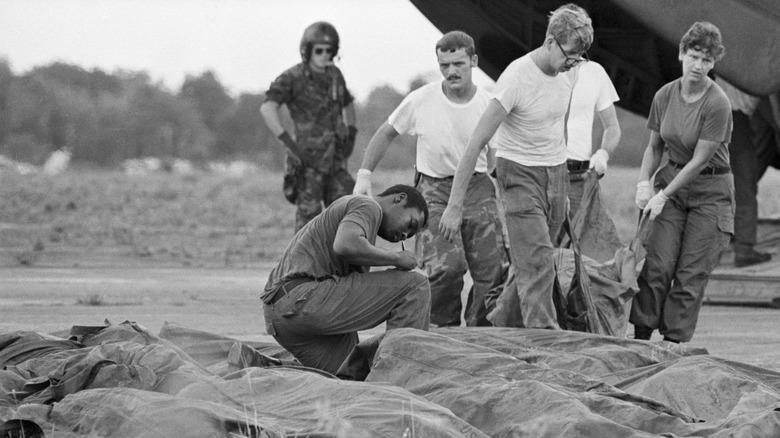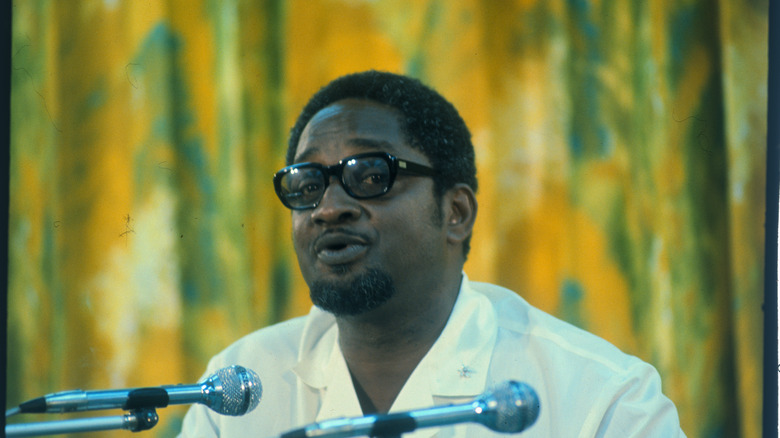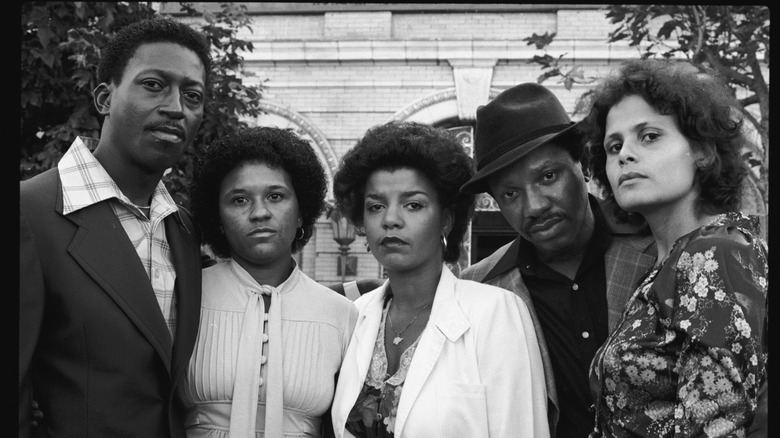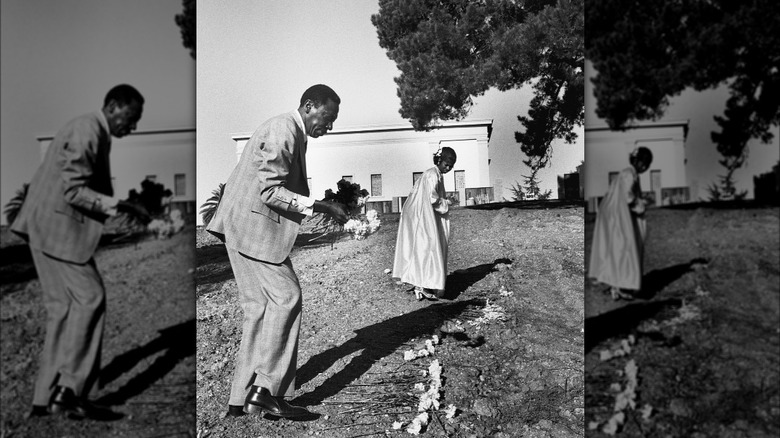Why The Jonestown Massacre Is Worse Than You Think
The "biggest mass suicide in history." Drinking the Kool-Aid. A megalomaniac cult leader gone mad in the jungles of Guyana. Religious fundamentalism taken to horrific extremes. These are the cliches of the 1978 Jonestown massacre, in which more than 900 people died from drinking cyanide-laced Flavor-Aid under the orders of Peoples Temple leader Jim Jones. Given the heinous nature of the event, it is tempting — or even comforting — to write off the massacre as the work of a man: Jones himself. But the popular account masks a more complicated — and disturbing — reality.
The Peoples Temple was no small-time operation. The multimillion-dollar enterprise had connections running from the San Francisco Democratic Party, to the California statehouse in Sacramento, and Washington D.C. Jones made or broke state and local politicians, who in turn shielded him despite reports of gross misconduct. Countries such as the USSR and Guyana aided Jones out of political and economic expediency, leaving his followers to their terrible fate.
The Jonestown saga is ultimately the story of cover-ups and betrayals by powerful people of those they were supposed to protect, all for money and power. That's less morbidly interesting than the popularized story of a fringe communist cult, but in many ways far worse — and as far as history is concerned (sadly), not so much out of the ordinary.
California politicians enabled Jones
Jim Jones ran the Peoples Temple from San Francisco, a 1970s hotbed of radical political activity. According to New West Magazine, he mobilized the city's African-American community into a crucial swing bloc to become one of California's "most politically potent religious leaders." He even campaigned for Jimmy Carter alongside Rosalynn Carter — that's how big he was. Few dared challenge him, even after New West broke abuse allegations in 1977.
When the State Department seemed poised to intervene in a child custody case relating to Jonestown, San Francisco's politicians and '60s radicals jumped to defend Jones. Activist Angela Davis asked the San Francisco D.A. to drop all investigations into Jones, claiming his detractors wanted to stop his commitment to social justice. In a letter to then-President Jimmy Carter, Jane Fonda called Jonestown an "amazing work ... the realization of the Peoples Temple dream." In another letter to Carter, California State Assembly member and future San Francisco mayor Willie Brown called Jones "a leader of the first order," while Harvey Milk begged Carter not to unleash the State Department on Jones.
Had Jones not received so much protection from these people, as well as others like Mayor Eric Moscone and Gov. Jerry Brown, the Peoples Temple might have been investigated in 1977 before it managed to flee to South America. Even there, it seems Jones expected the city to defend him; in a tape recorded just before the massacre, Jones said, "The people in San Francisco will not — not be idle... They'll not take our death in vain, you know" (via The New York Times).
The one politician who investigated Jim Jones was killed
While San Francisco Democrats ran cover for Jim Jones, California Democratic Congressman Leo Ryan broke ranks with his party to investigate. After New West Magazine published a damning article with the defectors' testimonies regarding abuse in Jones' cult, the Peoples Temple moved to Guyana, where members were reportedly forbidden to leave. Ryan went there to investigate and lost his life for his courage.
Accompanying Ryan was journalist Tim Reiterman, who published his experiences in The San Francisco Examiner in 1978. Reiterman said Jones pulled a page out of his fellow communists' playbook – he carefully choreographed the visit to make Jonestown look like a thriving settlement and prevent Ryan from finding out too much. Although Jones successfully kept Ryan away from the worst parts, the charade collapsed when two members handed Ryan a note begging the congressman to save them. At least 14 more joined them in their attempt to escape, something Jones would not tolerate.
Nevertheless, after one of Jones' loyalists nearly slit Congressman Ryan's throat, the defectors were allowed to leave for the U.S. Unbeknownst to Ryan, however, a member of Jones' "Red Brigade," Larry Layton, had inserted himself among the defectors as a saboteur. After arriving in Port Kaituma for their flight out of Jonestown, Layton signaled to a handful of men in a tractor following the party. In the resulting firefight, Ryan and several others were killed. Layton would be the only man convicted for the killings in 1986.
Jones governed like a communist dictator
While Jonestown was portrayed among Jim Jones' allies as some sort of multiracial utopia, the reality more closely resembled a Soviet labor camp. Thanks to the survivors of the massacre, America saw how the sociopathic Jones kept his increasingly doubtful followers in line by mentally breaking them through a combination of nutritional deprivation, humiliation, and punishment straight out of the USSR and communist China.
Jonestown survivor Eugene Smith wrote in a Newsweek op-ed that even when the cult was still in the U.S., Jones kept an iron grip. If you broke the rules, Jones dressed you down in front of everyone else. You didn't defend yourself; you just took it. Additionally, the residents were encouraged to criticize themselves to Jones, whether in person or in writing. It is easy to see the influence of Mao Zedong's China here, given these were pretty much identical to communist Chinese "struggle sessions" meant to keep potential defectors in line.
Life wasn't much better day-to-day. Work consisted of 8-12 hour days in the jungle, with most meals consisting mainly of rice. Jonestown's inhabitants were kept on a low-protein diet, no doubt to keep them weak and pliable. Jones, however, just to make sure that people did not miss their old lives in America, made sure to feed a daily diet of propaganda about America's impending collapse and how bad life was elsewhere — kind of like North Korea does today.
The White Nights were a special form of torture
Among the worst forms of psychological torture Jim Jones employed was the infamous "White Night." Survivor Eugene Smith wrote in Newsweek that life was already hard enough working 12-hour days in the jungle, only to come home to a meal of rice. After that, one could look forward to four hours of sleep, because Jones made sure that everyone was kept in a high state of stress through fears of outside attack.
According to Smith, the "White Night" was the drug-addled Jones' way of sounding the alarm when he claimed the commune was about to come under attack. "Everyone would run to the pavilion and Jim Jones would talk and prophesize and go off on his rants and raves for hours and hours. He was strung out."
Other survivors gave varying descriptions of what constituted a "White Night," but it was undoubtedly a form of manipulation. The meetings, apart from depriving people of sleep, kept everyone in a heightened state of stress regarding the possibility of the Guyanese army invading the commune and slaughtering the inhabitants. This in turn reinforced people's loyalty to Jones, who promised protection but, in return, expected everyone to be ready to die for the cause. And they practiced this, too. A handful of "White Nights" were described as mass suicide rehearsals, a grim foreshadowing of the massacre that occurred in November of 1978.
History's biggest mass suicide was really a massacre
"Nobody committed suicide at Jonestown. It was a massacre," Peoples Temple financial secretary and Jonestown survivor Deborah Layton told a packed audience at Lincoln Land Community College in 2014 (via State-Journal Register). With those words, Layton busted Jonestown's most enduring myth — that it was history's biggest mass suicide.
Despite the mass suicide narrative, first responders chronicled in a 2021 Time Magazine article and witness Odell Rhodes (via The Washington Post) said otherwise. Although some followed Jim Jones' order, 300 children and infants were forced to drink the cyanide-laced Flavor-Aid, sometimes squirted through syringes by their mothers. The gruesome scene haunted the soldiers and responders at the scene for years after, with one worker writing, "Can't sleep. Cannot get the small children out of my mind."
Jones, meanwhile, had a solution for adult resistors of his "revolutionary suicide" order. Rhodes' said he saw them herded back to the pavilion at gunpoint and coerced into drinking the poison. His account, which is only what he personally witnessed, gave credence to first responders and Guyanese pathologist Dr. Leslie Mootoo's findings. According to the latter, up to 90% of Jonestown's victims were forcibly injected, shot, or strangled, meaning that Jonestown was really a mass murder. Among the few who definitely died by suicide was Jones himself. According to a Washington Post interview with his son Stephan, the former reverend-turned-cultist was too prideful to let anyone else kill him.
Jones didn't even bother to try and save the children
Jim Jones was an atheist and ardent communist who took his lead from the Soviet Union and communist China. Jones regularly spoke with Soviet officials. The study of Russian was obligatory in Jonestown, and Jonestown residents even petitioned to be allowed to immigrate to the USSR — only Jones' desire not to be subject to Soviet Premier Anastas Mikoyan killed that plan. The Soviets, however, saw Jones as useful. In a tape recorded just before the deaths, Jones' lieutenant Christine Miller said, "Well, I — Well, I thought you — they [the Soviets] said if we got in an emergency, that they gave you a code to let them know" (via the Jonestown Institute). Miller wanted Jones to use that contact at the Soviet embassy in Georgetown (Guyana's capital) to get the children out.
Instead, it seems a mix of superpower politics (or Jones' own intransigence) killed the plan. "[T]o Russia? ... You think Russia's gonna want us with all this stigma? ... [W]e had some value, but now we don't have any value." This reveals more about Jones' character than anything else. Even if the Soviets had refused the children entry because of "stigma," the worst they could have said was "no." There was a chance that even the USSR, in a bid to boost its global image, might have assented on humanitarian grounds. Instead, Jones seemed so obsessed with his "revolutionary suicide," that he was willing to block off all possible exit routes without even exploring their feasibility.
Jones gave everyone's money to the USSR
The Peoples Temple drew its membership largely from the poorer echelons of American society, no doubt about it. But the Temple itself was far from poor. Jim Jones' well-funded operation counted on around $27 million in total assets. These included $7 million in liquid assets stashed away in Venezuelan and Panamanian bank accounts. According to The New York Times, citing Guyanese police commissioner Cecil Roberts, the members of the Peoples Temple left all the liquid assets to the USSR because "we, as Communists, want our money to be of benefit for help to oppressed peoples all over the world, or in any way that your decision‐making body sees fit."
The NYT report drew heavily on the activities of Jones loyalist Maria Katsaris, who was tasked with organizing the delivery of some of the funds to the Soviet embassy in Georgetown. She visited Panama and Venezuela several times, suggesting she was Jones' primary financial go-between with the banks. However, when charged with writing out the wills for the accounts, which she appears to have had access to, she was coerced into leaving the money to the USSR. Detectives reported her handwriting was shaky and speculated that she may have even signed blank sheets of paper. Jones' wife, Marceline, left another note transferring money in Canada and the Bahamas — again, a sign that the cult was far from poor. It does not appear the USSR ever received the money, and Moscow refused to comment on the matter.
The forgotten massacre
While most of the Jonestown massacre took place in the eponymous commune, a second, smaller, avoidable massacre was taking place at the Peoples Temple headquarters in the Guyanese capital of Georgetown at the hands of Jim Jones loyalist Sharon Amos (nee Linda Silverstein). According to Silverstein's nephew August and his mother Robyn (Sharon's sister), Jones ordered cult members at the Georgetown headquarters to kill themselves (via SDSU). Most of the members in Georgetown, free from Jones' shackles, refused.
Amos, however, inexplicably chose to carry out a horrific act on Jones' order with fellow cult member Charles Beikman. She took her three children to a bathroom, where she and her older daughter Liane killed the younger two. Jones' son Stephan said that although Liane was, by all descriptors, a lovely young woman, she was too dedicated to her mother to refuse the next grisly request — mutually cutting each other's throats.
Sadly, Stephan arrived too late to stop the massacre, showing up right after Liane and Amos had killed each other. But 10-year-old Stephanie Brown, who was supposed to be killed by Beikman, survived. Beikman only cut her superficially to make it seem to Amos like he had carried out Jones' orders. In doing so, he saved her life. When Beikman went on trial, he got a reduced sentence of five years on an attempted murder charge thanks to his refusal to kill the girl.
The Guyanese government gave Jim Jones free rein
Among the major questions of Jonestown was, why did the Guyanese government allow Jim Jones and the Peoples Temple to settle there in the first place? The answer was political expediency, despite the flashing red warning signs that Jones was not all he claimed to be.
In the 1970s, Guyana was a poor, underdeveloped country covered in inaccessible jungle. According to SDSU's Prof. Khaleel Mohammed, Guyana wanted foreigners of a socialist bent willing to develop the interior, and a mostly-Black, ostensibly-Christian movement led by a white man — reminiscent of recent British colonial rule — seemed like the perfect vehicle to get it done. It was all the more attractive due to Guyana's conflict with Venezuela over the Essequibo region. Jones would settle the borderlands, strengthen Guyana's claims to the area, and make it economically viable. Jones used his money to bribe police, army personnel, and officials to look the other way when reports of abuse surfaced, setting the scene for the November 1978 tragedy.
After the tragedy, the Guyanese government, possibly aided by the United States, went into cover-up mode. The testimony of Dr. Leslie Mootoo, who found evidence of forcible injection and gunshot wounds on the vast majority of the bodies, was buried to make it look like a mass suicide. To add insult to injury, the wife and the deputy prime minister of Guyana president Forbes Burnham (above) visited the scene immediately and reportedly made out like bandits with $1 million in victims' valuables.
The survivors were ridiculed and ignored
"The Story of the Jonestown Massacre Is About Much More Than Jim Jones," read a Time Magazine headline. Around 80 people survived Jonestown, but the U.S. media sought to make the story all about Jones. He became the all-powerful cult leader, while the survivors' stories were completely ignored. They were relegated to supporting figures who blindly followed Jones, stopping Americans from hearing details that ran counter to the narrative of the "biggest mass suicide in history."
The Jonestown survivors got a cold welcome-back to America. The New York Times reported in 1979 that many refused to speak out of shame. Others feared for their jobs and livelihoods — membership in the Peoples Temple was sometimes grounds for termination. They were depicted as blindly "drinking the Kool-Aid" by following Jones to suicide and as stupid for following Jones in the first place. Never mind that the vast majority of the members — around 70% — were Black people who were disgruntled with racially segregated America and saw a leader in Jones, who seemed to echo Martin Luther King's vision articulated in "I Have a Dream."
Ultimately, many of the survivors did not speak to the press about their experiences until around 2000, when the creators of "The Laramie Project" sought them out. Since then, their experiences have been heard, although they still play second fiddle to Jones, whose life story will hit the silver screen in an upcoming Leonardo DiCaprio movie.
Jones took advantage of people who wanted a better America
"What were these African Americans doing in the middle of the jungle with this white man?" filmmaker Stanley Nelson once asked (via PBS). The answer is a bit complex, but it boils down to Jim Jones taking advantage of people who were tired of segregation and institutional racism in America.
The Peoples Temple was around 70% African American in 1978, when the Jonestown massacre occurred. Many followed Jim Jones because at one point, he seemed like the real deal, seeking to turn Martin Luther King Jr.'s "I Have a Dream" speech into reality. In this aspect, the Peoples Temple did well. Anyone was welcome there, including mixed-race couples, whose marriages were illegal in many states until 1967. It brought together people of different economic backgrounds, ranging from unhoused people, veterans, and runaways to affluent middle-class Black professionals. When Jones moved operations to San Francisco, his mostly-Black congregants saw him as their fighter in City Hall and in Sacramento.
In the end, this is perhaps the saddest part of the Jonestown saga. Was Jones the real deal who went mad with power, or always a manipulative sociopath? Survivors' accounts suggest the latter, meaning that Jones took advantage of some of America's most vulnerable and isolated. To what end? Jones would have said it was for the Revolution, but his bank accounts suggest it was the same old, same old: money, power, and control over his fellow man.
If you have been impacted by incidents of mass violence, are experiencing emotional distress related to incidents of mass violence, or are struggling or in crisis, contact the relevant resources below:
- Call or text Disaster Distress Helpline at 1-800-985-5990 for support.
- Call or text 988 or chat 988lifeline.org.
